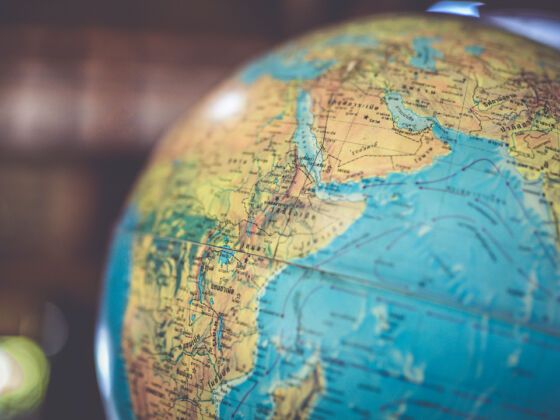THE TERRIBLE ATTACKS that occurred in Boston last week had a minor geographic sidenote — a startling number of Americans took to social media proclaiming that the bombing suspects were from the Czech Republic, confusing the country with the Russian region of Chechnya. The mistake was so widespread that the Czech ambassador issued a statement declaring that his country was not, in fact, Chechnya. (CNN followed suit, with the succinct headline: “Q: Where are Chechens from? A: Not the Czech Republic.”)


Czech Republic Vs. Chechnya: 7 Other Places for Americans to Confuse
Despite our historical hobby of defenestration, we Czechs are generally more known for our complacency and lack of any sort of extremism. Where I live in Czech Republic, this confusion in the US was met with the now-customary headshaking at the geographic ineptitude of Americans (who have at this point become rather infamous for not finding places on a map), some slight indignation, and many shrugged shoulders. (A friend remarked: “Yeah, well, I don’t know where Wisconsin is. So there.”)
With the understanding, then, that geographical blunders can happen to anyone, here are other places Americans could maybe interchange once in a while, for fun:
Slovakia vs. Slovenia
To people from faraway lands, confusing these two countries is somewhat understandable — both are small, mountainous, Slavic-speaking countries with reputations for hearty food and kind people. Austria and Hungary lie between them, however, and there are of course copious cultural differences. For example, Slovenia has a seaside, and Slovakia has an alcoholic beverage made out of a conifer.
The Arctic vs. the Antarctic
I think it took me until the end of grade school to discover that the Arctic isn’t a continent, it’s just frozen sea you can walk on. (We definitely had a unit on Arctic explorers at some point, so this is a bit unimpressive on my part.) I think some people still mix up the homes of penguins and polar bears (Antarctica and the Arctic, respectively), but an expedition that confused the two would find itself well off course.
Georgia vs. Georgia
As with the Arctic incident, it took me an unimpressively long time to figure out that Georgia is both an American state and a country in the Caucasus. I eventually discovered this when listening to “Back in the USSR” in the car with my dad as a kid. When I asked him what the state next to Alabama was doing in a song about the Soviet Union, my bemused father explained the existence of a country whose Czech name is Gruzie and English name is Georgia. (The native Georgian name for Georgia is Sakartvelo, which sounds like neither of the above.) However, the state of Georgia is not left out in song — the American band The Mountain Goats wrote one I like called “Going to Georgia.”
Austria vs. Australia
Despite sounding similar, Austria and Australia are rarely confused, as one is a giant island in the middle of nowhere with strange animals and the other is a small alpine country in central Europe. (The difference in population density is also striking: Australia has less than 3 times the population of Austria but is 90 times the size.) “Kangaroos in the Alps!!” would be a great headline.
Iceland vs. Ireland
Two very disparate northern European islands. In politics, for example, Ireland is historically famous for The Troubles, a 20-year bloody separatist conflict with far-reaching and tragic consequences. Iceland has recently become famous for the mayor of its capital city of Reykjavik, Jon Gnarr. After playing for years in a punk band called Runny Nose, Gnarr formed a comedic political party called the Best Party and ran for office on a platform that included free towels in all swimming pools, “all kinds of things for weaklings,” and a polar bear for the Reykjavik zoo. He won, and has since combined some earnest social activism with a whole lot of absurd public situations. Icelandic politics will never be the same.
Budapest vs. Bucharest
These are the capitals of Hungary and Romania, respectively. Both are known for their architecture, though this does not really distinguish them from countless other European cities. Budapest is ranked as “Europe’s 7th most idyllic place to live” by Forbes, proving that even concepts like “idyllic” are not free from attempts at quantification by the business sector. Bucharest has the enormous Palace of Parliament, which is allegedly the world’s heaviest building.
Uppsala, Sweden vs. Upsala, Ontario
Uppsala is a city in eastern Sweden famous for having the oldest university in Scandinavia (Uppsala University, founded in 1477). Upsala, which is named after Uppsala, is a tiny town in Northern Ontario. The town consists of a gas station, a crowded general store, a parking lot filled with defunct machinery, and several 8ft surrealist statues of blackflies eating people. The last seems to be a sort of tribute to the horrendous, painful swarms of insects that plague the region in summer. My tree planting camp passed through Upsala one summer at dusk. I have never felt more as though I were on the set of some surrealist horror film. I don’t know what would compel someone to greet tired wanderers through a desolate part of the Canadian wilderness with giant statues of blackflies eating people. The human psyche is a terrifying place sometimes.
BONUS: Sydney, Australia vs. Sydney, Nova Scotia
Buck up, Americans — questionable geography isn’t limited to your borders. In 2002, this British couple boarded a plane at Heathrow with plans to spend their summer vacation on the beaches of southeastern Australia, but wound up “looking at the pick-up trucks and eating the local lobster” in a small port town on Cape Breton Island in eastern Canada. In addition to studying that world map, better brush up on your airport codes.